This post may contain affiliate links. Please read our disclosure policy.
Making a gluten free biscuit recipe without xanthan gum that still tastes crisp outside, fluffy inside, with just the right nubby texture, just takes a different type gluten free flour blend.

Why make a gluten free biscuit recipe without xanthan gum?
I've never tried to be all things to all readers and gluten free bakers (or eaters!). The recipes I develop are all gluten free. But that's the whole of my pledge to you.
The “Ingredients and substitutions” section right above the recipe card in every post I've written for years is an attempt to help. But it's not a promise to solve, since each step away from the recipe as written is really a new recipe.
Every food blogger will tell you that the substitution questions can be crazy-making. But I decided to lean into the discomfort, and try to help.
What about psyllium husk?
I've been working on replacing “the gums” (guar gum and xanthan gum) in my gluten free flour blends for some time. So many of you have asked, over the years, about using psyllium husk.
I tried. I really tried. But I hated baking gluten free with psyllium husk! It can do amazing things for the texture of raw gluten free bread dough. But bake it, and it tastes “good, for gluten free” to me.
I started this blog for one purpose: to do my part to banish “good, for gluten free” from our lexicon. So I tried and tried, but psyllium husk was just a non-starter for me. If you insist on using it, I can't help. I do wish you the best, though, because success as we each define it is, indeed, success!
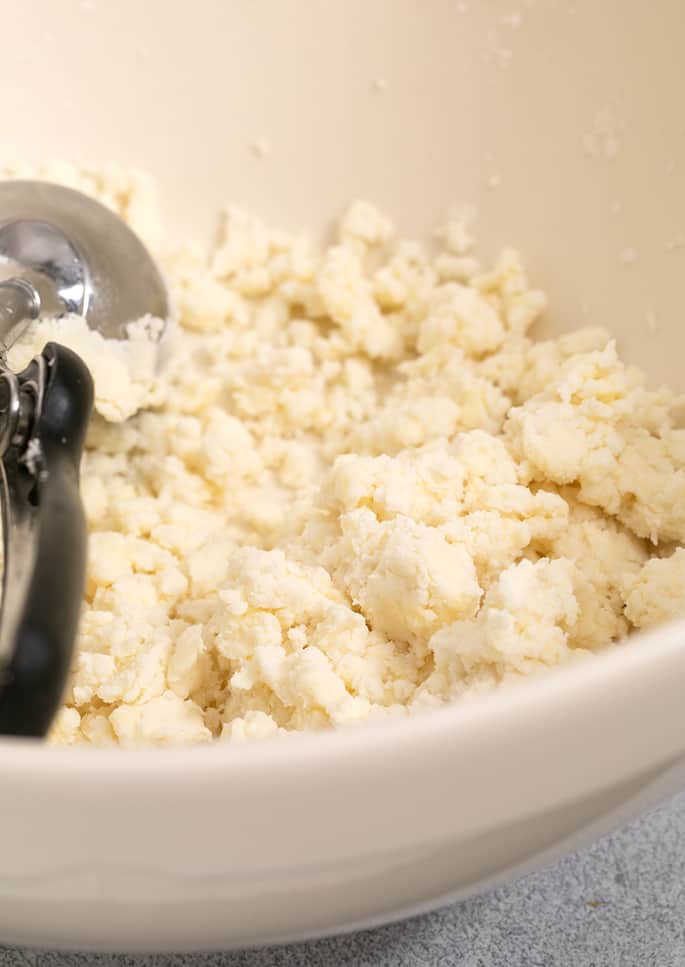
What is konjac/glucomannan powder?
No medical advice here!
First, I am not a medical professional of any sort, and am not giving medical advice. Your dietary choices, including which ingredients to cook and bake with, and ultimately eat, are yours to make.
If baking with konjac powder makes you uncomfortable, please don't do it. If you have comments related to baking with it that you'd like to share, please help us move forward.
If you have comments related to the health of these ingredients, please discuss those with your doctor. Comments here, in my house, will be moderated.
Back to baking
As explained by Healthline, konjac powder (also known as glucomannan powder) is “an herb … known for its starchy … tuber-like part of the stem that grows underground [, which is] used to make a rich source of soluble dietary fiber.”
In the Western part of the world, it's (unfortunately) best known for weight loss. It's also used in those so-called “miracle noodles,” which I personally wouldn't eat. Baking with konjac powder calls for a miniscule amount, similar to the amount of xanthan gum in other gluten free baking.
I have bought it from nuts.com (sold as glucomannan) and from Amazon.com under the “moderinst pantry” label. They seem to be equally effective in baking.
There are so very many types of powders and flours available on the World Wide Web (emphasis on wide). I love pushing into new territory that can make even better gluten free baked goods, and I've gotten used to the criticisms.
But things can always be done better. And I want to do better, and at least offer you options. After all, that's what my recipe for gluten free bread flour is all about.
I've found that konjac powder can replace xanthan gum as a binder in gluten free recipes without affecting the taste of baked goods. I've built a blend around it, and I'm sharing my first and easiest recipe with you here.

What else is in this flour blend?
I began testing this recipe with my basic gum-free flour blend, which contains about 2/3 superfine white rice flour, about 1/5 potato starch, and about 1/8 tapioca starch—and just adding konjac powder. It “worked,” but the biscuits didn't rise as high or brown nearly as well.
Adding potato flour helps what's called the Maillard reaction, which is responsible for some browning. That should be very blah blah blah to you, but I like to explain the “why” when I can since I think it makes you more likely to follow the recipe as written!
You must use superfine white rice flour and tapioca starch. Potato starch is more neutral, and can often be replaced with cornstarch or arrowroot.
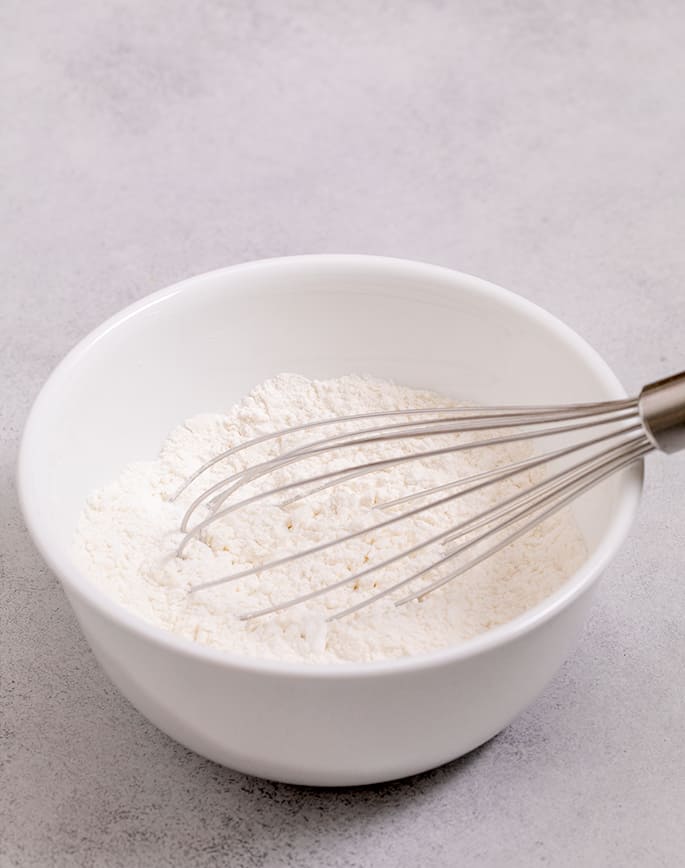
Can I use this flour blend in all gluten free recipes?
No, I don't recommend using this flour blend anywhere other than this recipe—for now. I'm working on a guide for using konjac powder in place of xanthan gum (or guar gum), but I haven't yet completed my testing, so I can't share the results yet. It won't be the same in all types of recipes.
I'm simplifying our mock Better Batter gluten free flour blend, rather than simply replacing xanthan gum with konjac powder. Plus, konjac powder so far doesn't appear to be a 1:1 replacement for xanthan gum in all things—especially since I'm eliminating pectin as an ingredient.
I do hope to arrive at a simpler version of an all purpose gluten free flour blend without xanthan gum that works everywhere my recipes call for an all purpose blend. It will call for varying amounts of konjac powder, though. That will make it an even more useful blend, though.

Ingredients and substitutions—and tools
You must use konjac (also called glucomannan) powder, discussed fully above, to make this recipe. The recipe is built around it. If you must avoid it, you'll need xanthan gum, as used in our classic gluten free drop biscuits recipe.
You also must use superfine white rice flour and tapioca starch. And all the flours must be measured by weight, not by volume, for the recipe to be reliably successful.
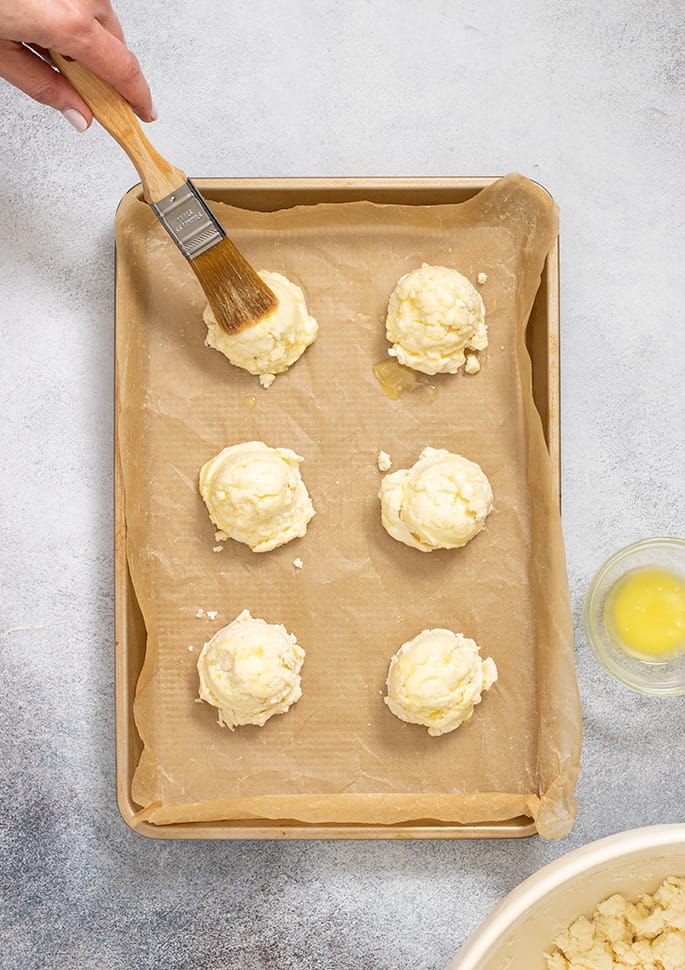
Digital kitchen scale
When building a flour blend, the balance of individual gluten free flours must be just right. That means you cannot build one successfully using volume measurements, which are subject to inevitable human error and lack of standardization of size.
I have a digital OXO kitchen scale with a pull-out display. It's about $50. But I do this all day every day. A super cheap Escali brand scale (which should cost about $15) works great.
Dairy
You can replace dairy in this recipe the same way I recommend in our classic xanthan gum-containing 20-minute drop biscuit recipe (linked just above). For the butter, try vegan butter (favorite brands are Miyoko's Kitchen or Melt).
For buttermilk, you can use my favorite substitute, which works with dairy or nondairy ingredients quite equally: half plain yogurt by volume, half unsweetened milk by volume.
Potato (flour)
If you can find potato flour, I urge you to follow the recipe as written, and add that bit of it. Otherwise, you can replace the potato flour with more superfine white rice flour (by weight).
Keep in mind that, without potato flour, the biscuits simply won't brown as well.
If you can't have potatoes, you can try replacing the potato starch with cornstarch or arrowroot.
Konjac powder
In place of konjac, you can try using guar gum or Modernist Pantry's Perfect Gluten Replacement (cellulose). Here's a full discussion of xanthan gum substitutes.

Gluten Free Biscuits Without Xanthan Gum Recipe
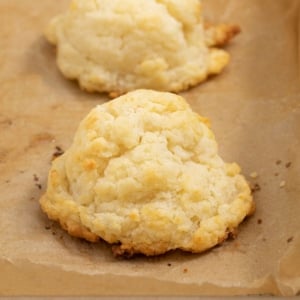
Ingredients
For the flour blend
- 168 grams superfine white rice flour, 60%
- 62 grams potato starch, 22% (See Recipe Notes)
- 34 grams tapioca starch/flour, 12%
- 16 grams potato flour, 6% (See Recipe Notes)
- 1 teaspoon konjac powder, also called glucomannan powder
For the biscuits
-
Flour blend from above - 1 tablespoon baking powder
- ¼ teaspoon baking soda
- ½ teaspoon kosher salt
- 8 tablespoons [112 g] unsalted butter, cut into a 1/4-inch dice or grated and kept very cold
- 1 cup 8 fluid ounces buttermilk, chilled
- 2 tablespoons [28 g] unsalted butter, melted
Instructions
- Preheat your oven to 425°F. Line a large rimmed baking sheet with unbleached parchment paper and set it aside.
- Set a large mixing bowl over a digital kitchen scale. Measuring by weight and hitting “tare” on your digital scale to zero out the weight of the bowl, add the superfine white rice flour, potato starch, tapioca starch, and potato flour, zeroing out each ingredient after it’s added. Add the konjac powder by volume, and whisk to combine well.
- To the same bowl, add the baking powder, baking soda, and salt, and whisk to combine well. Add the diced or grated and chilled butter, and mix to combine, flattening any large clumps in the butter with the back of your mixing spoon. Add the buttermilk and mix until combined.
- Working quickly, so the dough doesn’t get warm, drop the batter by the quarter cup using two large spoons or a 2-inch ice cream scoop about 1 1/2-inches apart on the prepared baking sheet. Using a pastry brush or the tips of your fingers, brush the all exposed sides of the mounds of dough generously with the melted butter.
- Place the baking sheet in the center of the preheated oven and bake until lightly golden brown all over (about 15 minutes). Remove from the oven and allow to set briefly before serving.
Video
Notes
Please use potato flour if at all possible. If not possible, you can replace the 16 grams of potato flour with the same amount (by weight) of additional superfine rice flour. If you can't use potato flour because you can't have potatoes, try replacing the potato starch with cornstarch or arrowroot.
Nutrition information is automatically calculated, so should only be used as an approximation.


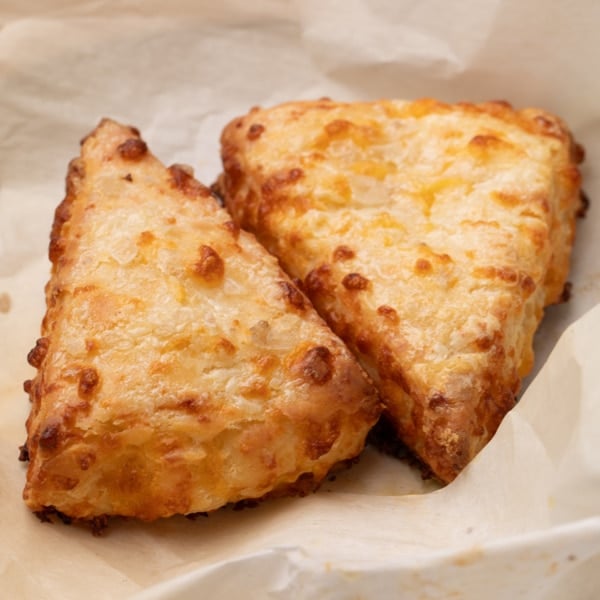
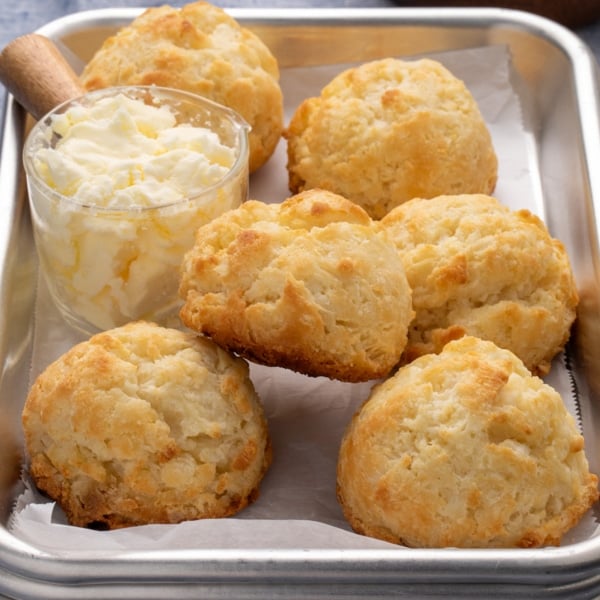

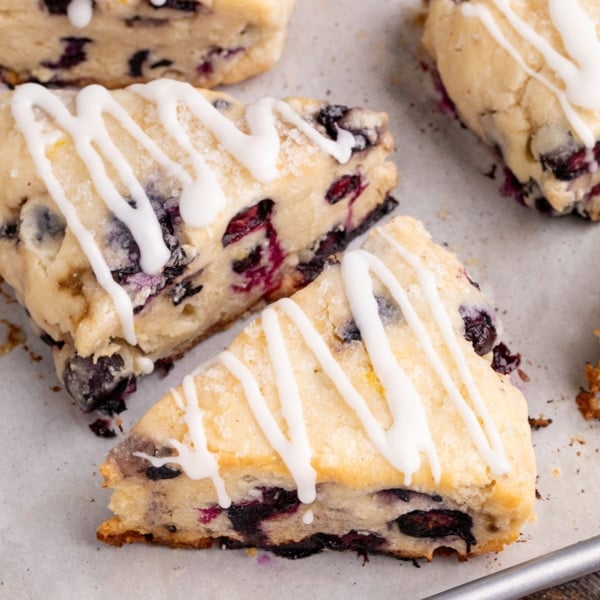









hi Nicole — thank you so much for your excellent gf recipes and flour blends. I and my partner moved in together and they are gluten-intolerant and sensitive to many gums, including xanthan. they say that this konjac gum biscuit recipe is the closest that a gf biscuit recipe has ever gotten to a gluten biscuit recipe. as such I am obliged to ask: what are the results of your testing w/ konjac in place of xanthan? having a gf blend that gets even closer to a gluten blend would be an absolute boon.
This is the extent of my testing with konjac in place of xanthan gum. But you’re welcome to use this recipe as a guide to try it in other ways, but I’m afraid I can’t promise results as I haven’t tried myself.
hi Nicole — thank you regardless! I was curious about your regular drop biscuit recipe and tried that, simply substituting xanthan gum with the konjac. while I’m sure there are situations where konjac can’t be substituted in 1-for-1 with xanthan, he and I both found ourselves even more satisfied with the results there then with this (already excellent) recipe. I will continue experimenting with these and other recipes using konjac gum in place of xanthan. once again, thank you so much — your recipes have been a lifesaver for making delicious, healthy gluten-free food for them.
Amazing work! Always in awe of what you do. I have a few dietary restrictions to work around and try to avoid xantham gum bc it can be harder for me to digest. I’m wondering if agar agar (which seems to be similar in what it does and the quantities needed, and is much easier to procure where i live) might work as an alternative to konjac? or should i just try and see? haha. Also, as a fan of the blog, i’d love to see more baking recipes with more whole grain flours. they help not raise my blood sugars as much, which for me means i can eat a bigger portion- or sometimes that i can eat it at all! definitely not a petition, but i know recipe developers are always looking to hear from suggestions from their followers! anyway, SO looking forward to making recipes with your new blend. if agar replacement doesn’t work, i’m gonna search high and low for konjac! lol
Hi, Giuli, Agar agar is a gelatin replacement. It isn’t a substitute for konjac powder, which is readily ordered online from lots of different sources.
Hi Nicole! Just wanted to say I love the way you just talk to us as friends…..connecting on a personal level is even MORE important in these days! THank you for doing this, again, I am so grateful to you for taking your time to experiment , to explain, to re-explain, to be a Mom and run a house but take the hours and do this gf challenge and share your victories. THANK YOU!
Thank you for taking the time to say that, Karen. Although this is just a recipe blog, because it’s an allergen blog, I’ve always felt like the emotional support is essential to the delivery. And I agree so wholeheartedly that the connection is even more important now than ever. It means so much to me that you feel the love. It’s legit. :)
In the substitution section, you mention both potato starch and potato flour. Are they interchangeable?
I mention them in different contexts, Robin, and the context is very important in each case. No, they are not at all interchangeable.
What’s the reason for trying to eliminate the xanthan gum? It’s been a game changer and life saver for me…
Have a look at the section entitled “why make a gluten free biscuit recipe without xanthan gum,” right in the post, Pete!
A very interesting read, especially about the soon to be replaced pectin in your flour blend. I have been using your mock BB flour for several years and just recently, powdered pectin became difficult to find (north of Toronto area). I managed to find a supplier on Amazon and bought a case of small packets. I think I’m good for a few years now ;). Anyway, I’ll hold off on making this recipe as the konjac powder is quite pricey to have around for a single recipe. Thank you for all the research you do. You’ve made living gluten free so easy for me!
I’m glad you found it interesting even though it isn’t relevant for you right now. That’s a shame that pectin became hard to find, but I’m glad you were able to set yourself up for a while. That’s exactly why we need options, because no two lives have the same details. And I’m so glad you’re feeling the ease. That’s wonderful, Milvi!
Hi! I think this link got replaced – I’m looking for the recipe to the Paleo breakfast cookies. I just bought all the ingredients, and now the link comes to these biscuits! They look wonderful by the way – but I am really hoping to make these cookies! Please help. Thanks!! 😀
I’m not sure what you mean by “this link got replaced,” but please use the search function to find the Paleo breakfast cookies, or any other recipes you’d like!
Thank you so much for all of your hard work. I personally just don’t like the consistency of xanthum gum or guar gum and I can taste it in the foods so will be trying this alternative and anxiously await your other result.
Then this recipe, and others like it, are for you, Lisa!